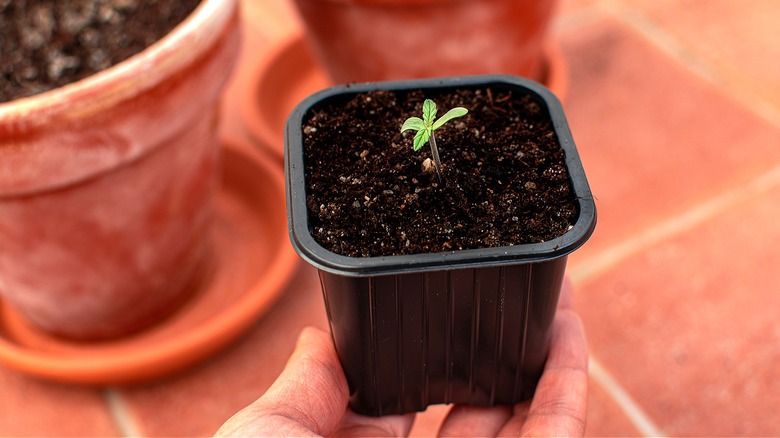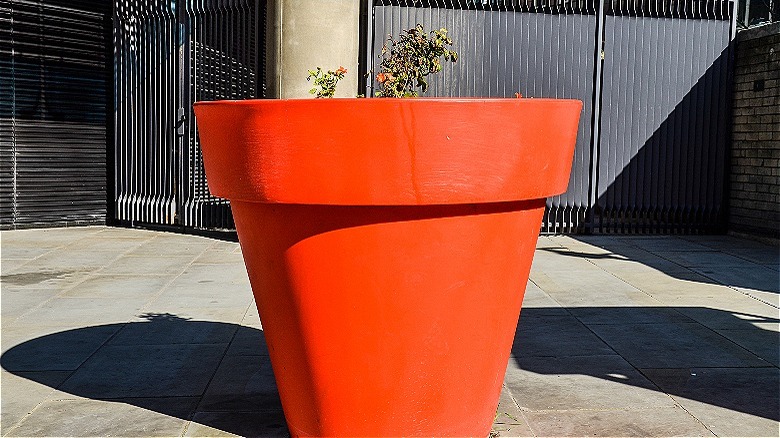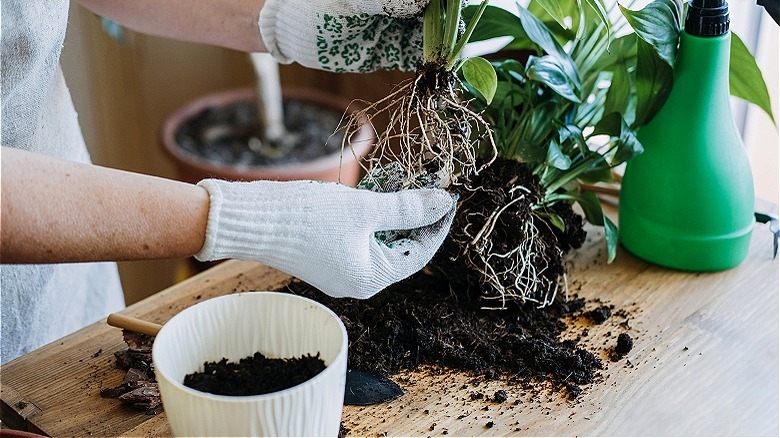The Hidden Dangers Of Using A Pot That's Too Big For Your Plant
As a gardening enthusiast, you might have encountered situations where the temptation to use a larger pot for your plants became too hard to resist. Perhaps you're nurturing a young seedling, and the thought of giving it all the space in the world to grow sounds enticing. However, it's important to remember that bigger isn't always better when it comes to pot size and your beloved plants.
The allure of using oversized pots, referred to as the practice of overpotting, often arises from a well-intentioned desire to provide our plants with an abundance of space and resources. We envision lush foliage and flourishing root systems as our green companions thrive in an environment seemingly unrestricted by size constraints. However, this vision doesn't always align with the reality of effective plant care.
While there may be valid reasons for using larger pots, such as accommodating plant growth or creating a visually appealing focal point in your garden, there are also some significant downsides to consider. It's essential to remember that pot size plays a pivotal role in your plant's overall health, impacting factors like moisture retention, root development, nutrient absorption, and even the ease of maintenance.
The downsides of using oversized pots
Using a pot that's too large for your plant can lead to certain problems, including overwatering, nutrient imbalance, and rooting problems. In an oversized pot, excess soil retains moisture for longer, increasing the risk of overwatering. This can drown the plant roots, leading to root rot and other water-related problems. Large pots also require more time for the soil to dry out, which can disrupt the plant's nutrient uptake. Inadequate aeration, meanwhile, can lead to poor growth and nutrient deficiencies, as well as the risk of infestation or disease.
Moreover, plants in larger pots often focus on growing their roots rather than developing their above-ground foliage, resulting in spindly, weak stems and leaves. And since large pots are heavier and more challenging to move, they're less practical for rearranging your garden or bringing plants indoors during adverse weather. They also require more soil and water, which can strain your resources and result in unnecessary expenses.
Choosing the right pot size for your plant
Selecting the appropriate pot size for your plants is crucial for their well-being. A good rule of thumb is to choose a pot that allows the roots to spread comfortably without excessive extra space. Also, remember that plants with rapid growth rates might require slightly larger pots to accommodate their development, but don't go overboard with a pot that's overly large. Regardless of the pot size, ensure proper drainage by adding holes at the bottom to prevent water from accumulating and causing root rot.
As your plants grow, consider repotting them into slightly larger containers. This gradual pot size adjustment will allow them to thrive without overwhelming their root systems. Strive for a balance between aesthetics and functionality. It's fine to choose attractive pots but ensure they're also suitable for your plants. Regularly inspect your plants for signs of root-bound growth or other issues related to pot size and adjust as needed.
The ill effects of using pots that are too large for your plants can be detrimental. Overwatering, nutrient imbalances, poor root development, and increased maintenance are all potential pitfalls. By carefully assessing your plants' needs and following these best practices, you can strike the right balance. So, resist the urge to go too big and let your plants flourish in just the right-sized pot.


